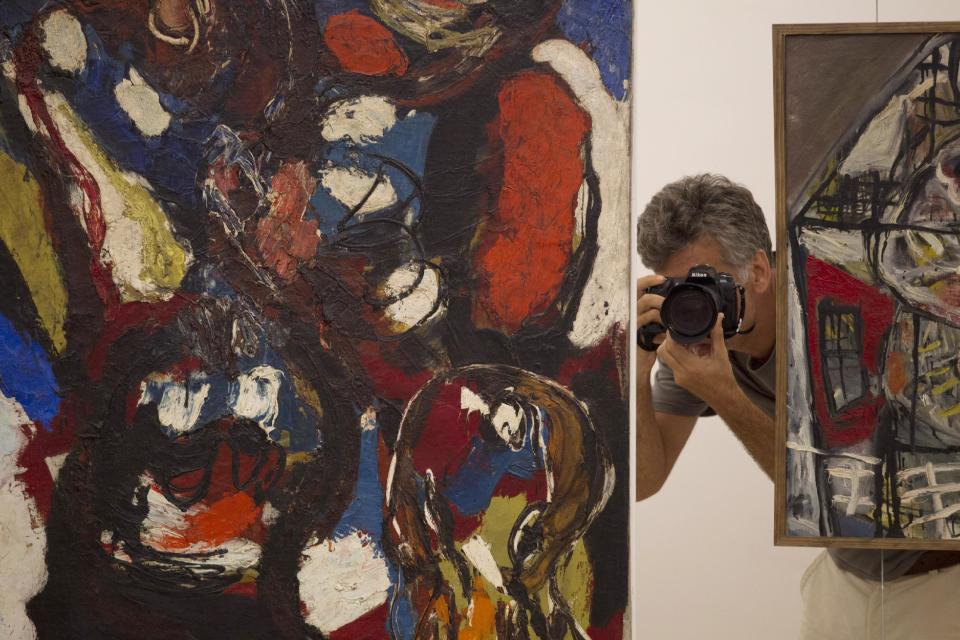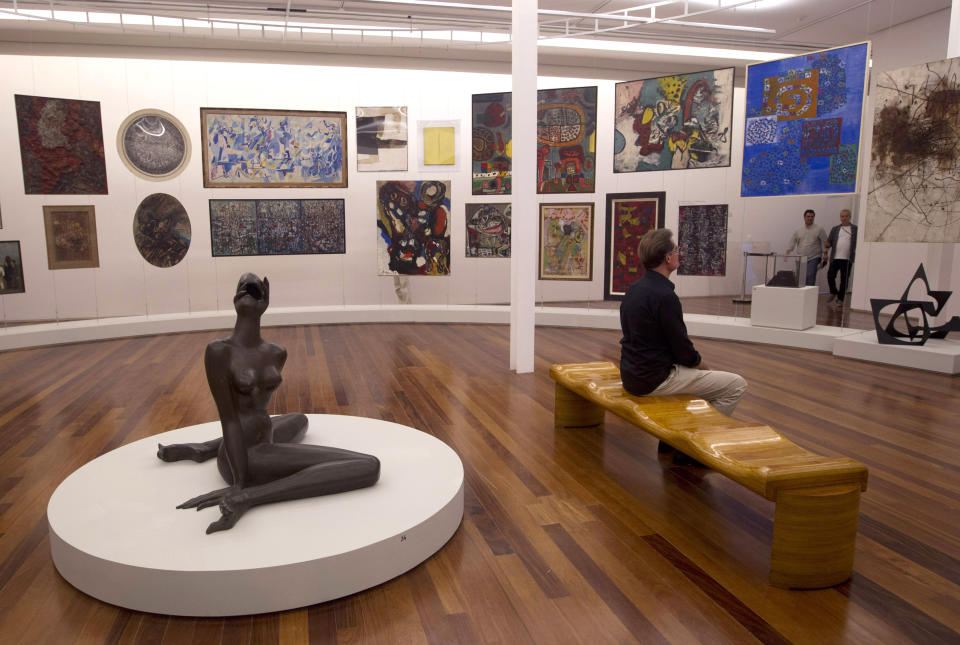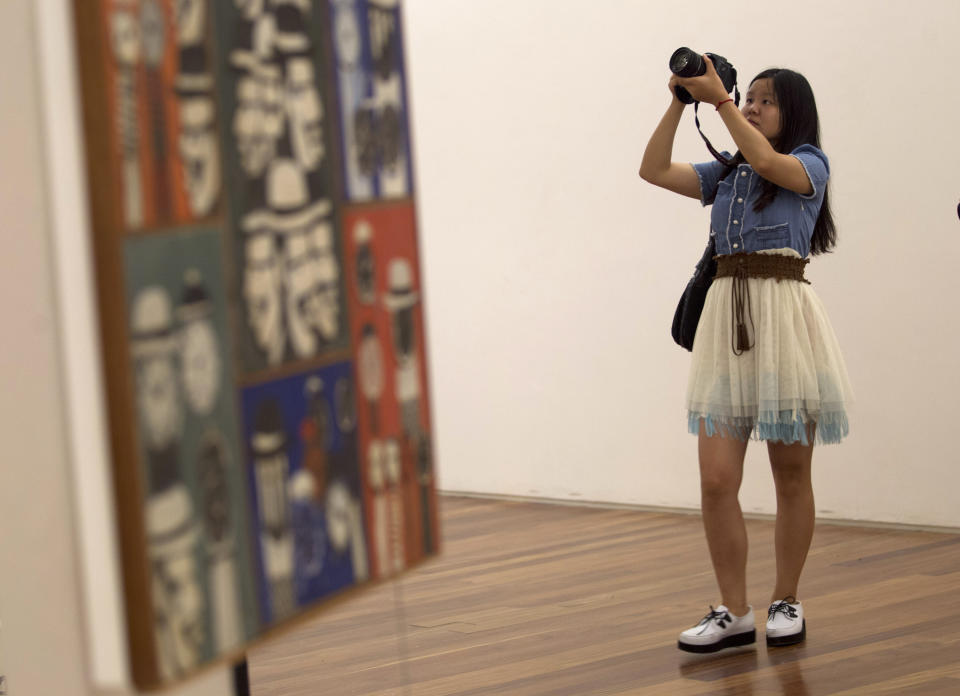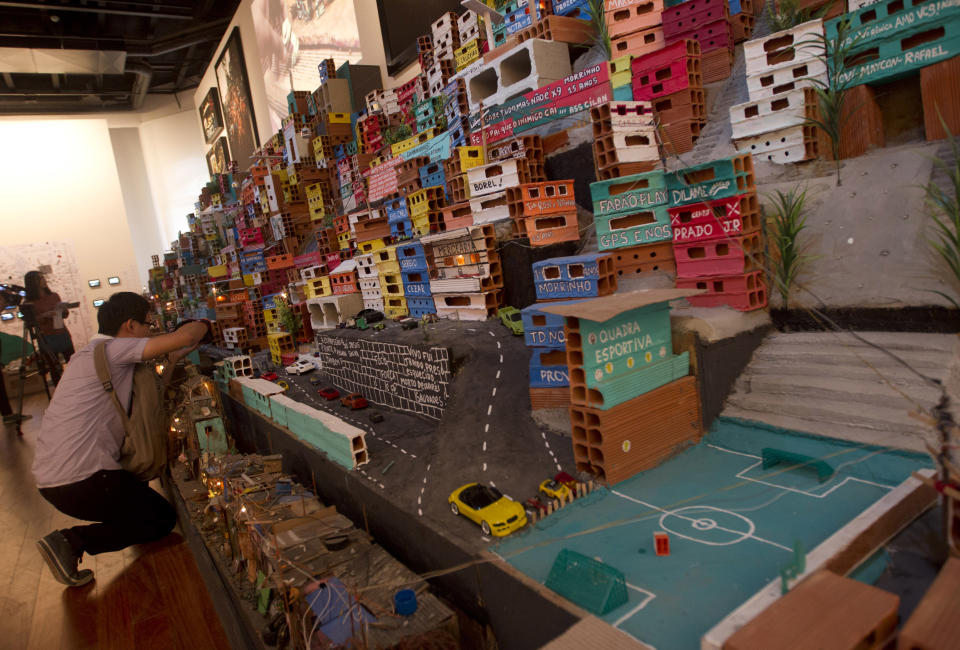New Rio art museum celebrates iconic cityscape
RIO DE JANEIRO (AP) — Picture-postcard Guanabara Bay is the main attraction of the Olympic city's newest cultural center.
The Rio Art Museum commands a view of the bay's azure waters, and its exhibitions feature image after image of the bay, with 18th century maps, 19th century paintings and contemporary photos showcasing its watery expanse, its fringe of tropical vegetation and its iconic Sugarloaf Mountain.
The museum, opening Friday with a visit from Brazilian President Dilma Rousseff, is part of Rio's multibillion-dollar bid to reinvent itself before hosting the 2014 World Cup and the 2016 Olympics. Long derided as a cultural wasteland whose main draws are sandy beaches and over-the-top Carnival celebrations, Rio hopes to emerge as Latin America's newest arts hub with a spate of new museums opening over the next few years.
The Rio Art Museum, or MAR, as it's known by its Portuguese acronym, is one of the centerpieces of the city's $3.8 billion project to renovate the port zone.
The museum is located in the heart of the city's derelict port neighborhood, sandwiched between crumbling colonial buildings and a multi-lane elevated highway. It's housed in two abutting historical buildings that were completely renovated and linked by a footbridge and big overhang whose wavy structure evokes the nearby bay's surface.
Municipal budgets have paid most of the $40 million needed to extensively renovate the two dilapidated buildings and set up the museum's initial exhibitions. Officials have said they hope the museum will become self-sustaining in the medium term.
Citing the successful port renovations that Barcelona and Sydney undertook before the Olympic games in those cities, Rio officials say they intend to transform the district into a bustling commercial and artistic center. Construction is to start next year on five 38-story TrumpTowers office buildings, another crown jewel of the Porto Maravilha renovation project. The top floor of the MAR looks over the site where another cultural institution, the Museum of Tomorrow, is being built. Designed by celebrated Spanish architect Santiago Calatrava, the museum dedicated to science is to open in 2014.
The MAR's inauguration was timed to coincide with the 448th anniversary of Rio's founding, and the deadline had museum officials and workers scrambling. During a Thursday media visit on the eve of the opening, three of the museum's four exhibition spaces were largely ready, but construction workers were still rushing to put the finishing touches on the buildings.
Although the MAR already has a collection of some 3,000 pieces of art, many donated by private collectors, it won't have a permanent display. Instead, several temporary shows will cycle through the museum annually.
"River of Images," one of the four initial exhibits, celebrates Rio's cityscape, with its sandy beaches, verdant pockets of urban jungle and hillside slums known as favelas. It follows the city's evolution through the eyes of 18th and 19th century artists and map makers, 19th and 20th century photographers and 21st century videographers.
Sugarloaf Mountain, the photogenic rock that crowns the entrance to Guanabara Bay, is the star of the exhibition, looming in panoramic photos, watercolors and a host of antique souvenirs like cut-glass vases from 1910 and kitschy mugs from the 1920s. The show also includes an oversized Art Deco sculpture of Jesus's head, a study for the giant Christ the Redeemer statue that is one of Rio's top tourist attractions.
Another exhibition, titled "The Collector," showcases paintings and sculptures acquired by Jean Borghici, a European-born collector who arrived in Brazil in the late 1940s. The pieces span from the creations of globe-trotting 19th century French artist Jean-Baptiste Debret to the bright oil paintings of Brazilian modernist Tarsila de Amaral to the steel statues Brazilian sculptor Lygia Clark made in the 1960s and '70s.
Standout pieces in the two other exhibits include a diminutive cedar sculpture called "Saint Joseph in Boots" by Alejadinho, the most famous sculptor of Brazil's colonial period.
Beyond the exhibition rooms, the 5,200 square-meter (52,000-square-foot) museum space also includes an auditorium and classroom where up to 2,000 teachers from Rio's public school system will be able to receive art appreciation and pedagogy classes each year. Museum officials say the goal is to bring 100,000 public school students to the museum in the first year and twice that number in subsequent years.
Other museums opening in Rio before the Olympics include the Museum of Image and Sound, which is being built on Copacabana beach on the site of a former seedy disco, and the Casa Daros, a huge private collection of Latin American art, which is being inaugurated next month.




